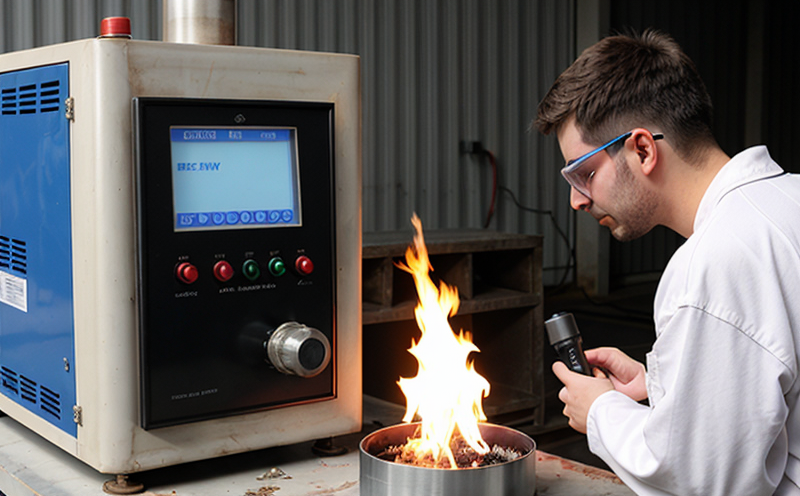EN 14511 Chiller Thermal Output Test
The EN 14511 standard provides a framework for testing chillers, particularly focusing on their thermal output performance. This test is crucial in ensuring that the chiller operates within specified efficiency and cooling capacity parameters as defined by international standards.
Compliance with this standard ensures that chillers meet energy efficiency requirements and deliver expected cooling capacity under various operating conditions. The test procedure involves subjecting the chiller to a series of controlled environments designed to mimic real-world usage scenarios, thereby evaluating its performance across different temperatures and load conditions.
The thermal output test is particularly important for HVAC equipment because it directly impacts the system's efficiency and overall cost-effectiveness. Inefficient chillers can lead to higher energy consumption, increased operational costs, and potential environmental impact due to greater emissions from electricity generation.
During the testing process, specific parameters such as refrigerant type, cooling capacity, and electrical input power are monitored closely. The test setup typically includes a water circuit for the chiller, a temperature-controlled environment, and measurement instruments capable of recording critical data points like outlet temperature and flow rate.
The test procedure involves running the chiller through various stages where it is subjected to different load conditions, including part-load and full-load scenarios. The goal is to observe how the chiller responds under these varied conditions and ensure that its performance remains consistent with the manufacturer’s specifications.
Accurate measurement of thermal output is essential for determining the efficiency of a chiller. This involves calculating the cooling capacity divided by the electrical input power, resulting in an overall coefficient of performance (COP). A higher COP indicates better energy efficiency and lower operating costs over time.
The EN 14511 standard also emphasizes the importance of testing under realistic conditions to reflect true operational scenarios. This approach ensures that the test results are reliable indicators of a chiller's actual performance in various applications, from industrial settings to commercial buildings.
In addition to efficiency, thermal output tests provide valuable insights into a chiller’s reliability and longevity. By subjecting the equipment to rigorous testing, manufacturers can identify potential weaknesses or areas for improvement, leading to enhanced product quality and customer satisfaction.
For procurement teams considering new chillers, compliance with EN 14511 is often a critical factor in selecting reliable and efficient equipment. Quality managers also rely on these tests to ensure that all purchased chiller units meet the necessary performance criteria, thus minimizing operational risks and maximizing long-term value.
Furthermore, R&D engineers use thermal output test results as part of their continuous improvement efforts. By analyzing data from multiple tests, they can refine designs, optimize component selection, and develop more efficient chillers that better meet market demands.
Scope and Methodology
- The scope of the EN 14511 thermal output test includes evaluating the cooling capacity, energy efficiency, and overall performance of chillers under controlled conditions.
- The methodology involves subjecting the chiller to various load conditions, including part-load and full-load scenarios, to assess its thermal output accurately.
- Key parameters measured during the test include outlet temperature, flow rate, electrical input power, and refrigerant type.
- The testing environment is controlled to simulate real-world operating conditions, ensuring that the results are representative of actual performance.
The test setup typically includes a water circuit for the chiller, a temperature-controlled environment, and measurement instruments capable of recording critical data points. The procedure involves running the chiller through different stages where it is subjected to varying load conditions, allowing for comprehensive evaluation of its thermal output performance.
Industry Applications
- The EN 14511 thermal output test is widely used in the HVAC industry to ensure that chillers meet energy efficiency standards and deliver expected cooling capacity under various operating conditions.
- In commercial buildings, this test helps facility managers select efficient chillers that minimize operational costs while maintaining optimal cooling performance.
- For industrial applications, compliance with EN 14511 ensures reliable chiller operation in demanding environments, leading to enhanced productivity and reduced downtime.
- The test is also valuable for R&D teams looking to refine designs and improve the efficiency of new chillers, contributing to advancements in HVAC technology.
By ensuring that chillers meet the specified performance criteria outlined in EN 14511, organizations can reduce energy consumption, lower operational costs, and contribute to more sustainable practices. This standard plays a vital role in maintaining industry standards and promoting the use of efficient HVAC equipment.
International Acceptance and Recognition
The EN 14511 standard for chiller thermal output testing is recognized globally as an essential benchmark for evaluating chillers' efficiency and performance. This international acceptance underscores its importance in the HVAC industry, where energy efficiency is a key concern.
Many countries have adopted this standard or similar ones to ensure that their HVAC equipment meets stringent quality and performance standards. Compliance with EN 14511 demonstrates a commitment to sustainability and operational excellence, making it an attractive choice for both manufacturers and end-users.
The widespread adoption of this standard also facilitates international trade by ensuring compatibility and interoperability between different chiller models from various manufacturers. This global recognition enhances confidence among buyers and sellers, fostering a competitive yet standardized market environment.
By adhering to EN 14511, HVAC manufacturers can showcase their products' quality and reliability on an international scale, appealing to customers across diverse markets. Additionally, this standard helps in streamlining regulatory compliance processes, reducing the administrative burden for businesses operating in multiple jurisdictions.





